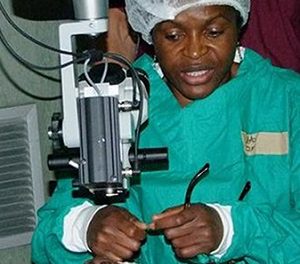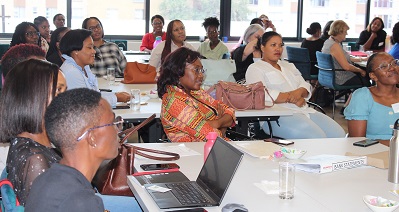
Workload analysis helps nurses to improve patient care

Conditions at government hospitals are often hectic especially if there is a surge in cases where all the patients need attention at more or less the same time. Taking care of this daunting task on a daily basis, is the chief nurse of the Windhoek Central Hospital, Matron Claudia Kambonde who is responsible for the work of around 700 nurses across a number of operational units in the hospital.
Reflecting on her daily responsibilities, Matron Kambonde said “My work is very interesting. I enjoy my work, even though sometimes it’s hard when there are too many patients in some operational units and not enough nurses to care for them.
On those days, she has to make tough decisions. It is her job to work with the managers of the operational units to shift nurses around to cover each unit and, if necessary, call in off-duty nurses to provide surge support.
Her job requires a level-headed leader who can successfully negotiate with managers to convince them to share their human resources for patients across the hospital.
“It is not a simple numbers game with an easy nurse-to-patient ratio,” Kambonde explained. “Sometimes, the kind of care needed is intensive and the impact of delayed care is severe. For example, eye patients may be few, but they need to have their eye-drops administered on time for it to be effective. Delays and distractions in the administration of healthcare can be detrimental.”
At a recent workshop supported by the U.S. government through the United States Agency for International Development (USAID), health leaders like Matron Kambonde were trained to analyze the workload of medical officers and nurses as well as the functioning of a host of ancillary medical services. These workshops by the Ministry of Health and Social Services, are designed to determine the standard tasks required for all types of patient care and the staff time required to perform those tasks.
“This workload analysis will make my work easier,” said Matron Kambonde. “It helps you make use of your statistics to determine your staffing needs.”
The workload analysis reduces the amount of time she has to spend negotiating staff allocations which in turn help the nurses to focus on their nursing responsibilities.
“When nurses are not distracted, overworked, and overwhelmed, they are better at their jobs and can provide skilled, quality healthcare efficiently and effectively. This means patients have shorter wait times, more positive experiences in the hospital, and leave with better health outcomes.”

Matron Claudia Kambonde (behind desk) of the Windhoek Central Hospital discussing the duty roster with Sister Rosemarie Masule.

















































